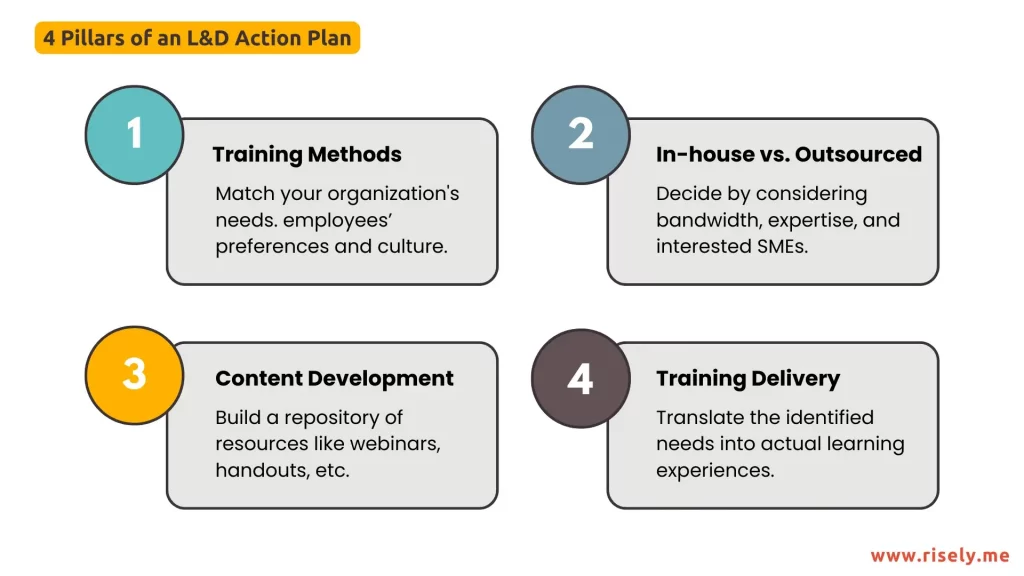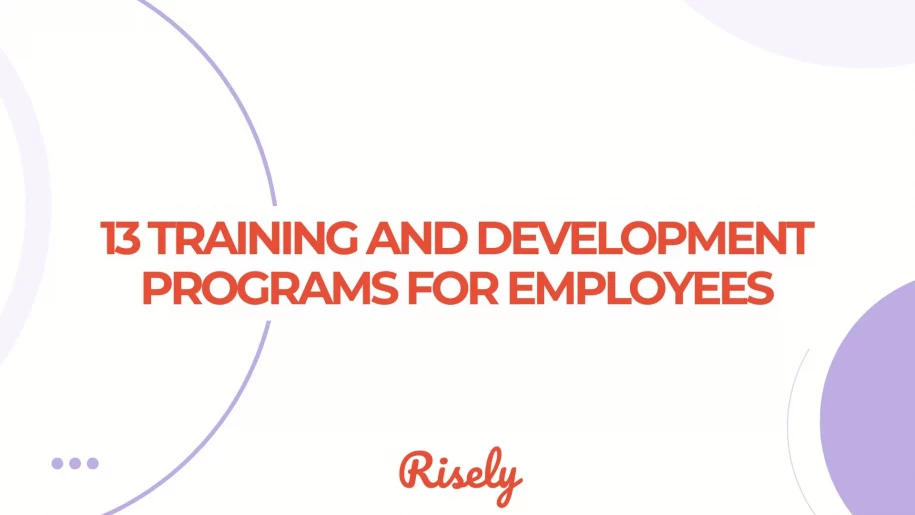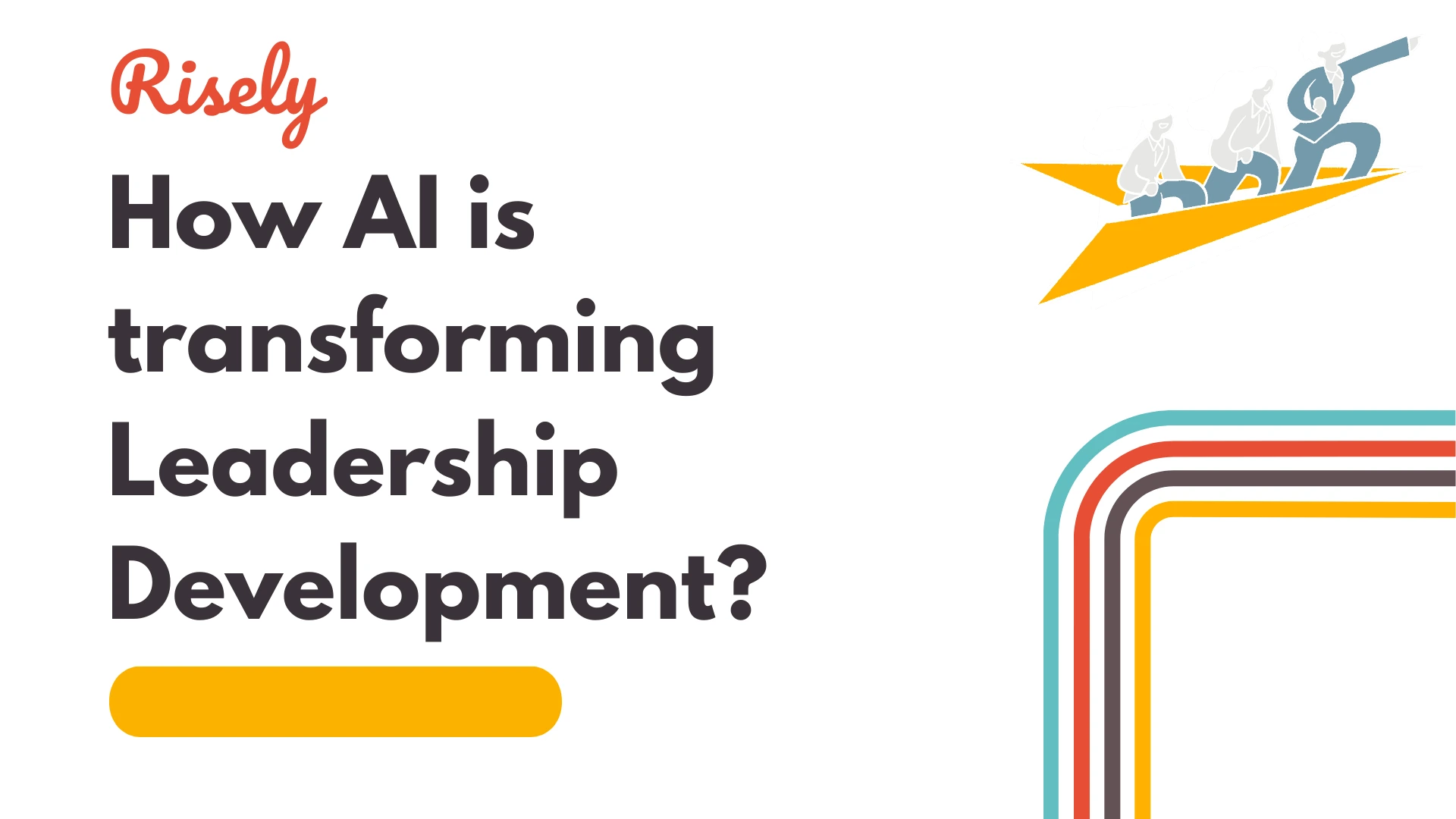Empower Your Workforce: 13 Training and Development Programs For Employees
Skilled and adaptable employees are the key to succeeding in this highly competitive business world. As an L&D leader, you can understand the value placed on investment through holistic training and development programs for employees that drive growth professionally and enable your employees to do their jobs well by acquiring the necessary skills and knowledge while making your organization stay ahead in a fast-changing industry. Your efforts are crucial in building an ideal workforce that can meet the critical challenges of tomorrow.Training and Development Programs For Employees
Training and development programs for employees aim to boost their skills, knowledge, and capabilities. You are well aware of how crucial aligning these programs with personal and organizational goals is to assess and eliminate skill gaps and develop a learning culture. Choosing the right training and development program is essential in building your L&D strategy. You need to figure out which program aligns with your organization’s needs and culture. Effective programs focus on more than just technical skills. They focus on building soft skills like communication, teamwork, and leadership.
1. Orientation and Onboarding Programs
Orientation is the crucial first step in training and development programs for employees as it welcomes new hires, and gives them an understanding of your company’s culture, policies, and processes. A well-structured orientation will leave them confident and informed from day one, setting the right tone as they meet other members of the team and learn about your company’s mission and values. Onboarding upgrades this process, providing new employees with the tools, training, and support they need to fit into their roles well. From job-specific training to working hands-on with key applications, onboarding programs are important in facilitating new employees’ transition into meaningful, productive members of the team. New hires who feel supported are more engaged, perform at a higher level, and are more likely to stay committed to the company long-term.2. Compliance and Ethical Training
Compliance and ethical training make an organization aware of the standards that would be used during their working hours, which are regarded as both lawfully and industrially standard-based. As an L&D leader, you understand that such training and development programs for employees equip them with awareness about different laws, regulations, and company policies pertinent to them, be it anti-harassment, data security, workplace safety, or ethical conduct. This will create a compliance and ethics culture that complements the elimination of risks coming from potential lawsuits or penalties. It will create a safe and respectful workplace. Employees will be able to participate in the organization if they understand ethical standards and are empowered to speak up, thereby encouraging transparency and a sense of accountability that will reflect favorably on the company’s reputation with clients, partners, and the community.3. Technical Skills Development
With the progressing technology scenario, one must keep oneself updated with emerging technical skills. As an L&D leader, you must identify and bridge the gap in the skill set with the appropriate training from learning new software packages, coding languages, data analysis, or any other industry-specific tool, among others. This competitive advantage can only be sustained by introduction of learning culture that encourages the employee to acquire certifications and to attend industry events and online courses for sharpening technical skills. Technical skills development is considered an investment in your people, which then develops the ability to innovate from your company side and to maintain a competitive advantage in the market. A technically skilled workforce is a building block of enhanced efficiency and future growth.4. Leadership and Management Training
Leadership and management training focuses on developing leaders who lead teams and advance organizational effectiveness. This can be achieved by the development of communication skills, delegation, decision-making, and conflict management skills to make for a more solid pipeline of leadership. A good leadership development process, in most cases, consists of workshops, coaching, mentoring, and online courses that facilitate one choice after another wherein leaders could apply their knowledge to real-life situations. Aligning leadership development to your organizational objectives will help in increasing the level of engagement in the workforce, improving morale, and therefore resulting in longer-term successes through empowered future leaders.5. Communication and Interpersonal Skills Enhancement
As an L&D leader, you understand that in today’s workforce, strong communication, emotional intelligence, and conflict resolution capabilities foster better teams and fewer conflicts in the workplace. You should train your employees to be more vigilant, use non-verbal communicative expressions, empathize with others, and express themselves assertively. Training in conflict resolution is also essential since employees constructively address their disputes and create a harmonious working environment. Soft skill training has the added advantage of better teamwork, increased output, enhanced customer care, and reduced workplace conflicts that usually damage the organization.Other Interesting Reads
6. Customer Service Excellence Training
Enhanced customer service is the success of an organization. As an L&D leader, you provide customer service training to your teams for the effective delivery of response support, quick resolution of issues, and building good relationships with customers. Product knowledge, good communication, conflict resolution, and creating real connections with a customer are some of them. Promote a customer-centric culture with your employees to empower them for that extra push. Such an approach not only improves the satisfaction level of the customers but also increases loyalty. Offering customer service excellence is the training and development program for employees that sets your organization apart; you build brand loyalty and ensure that customers keep coming back.7. Sales and Marketing Mastery
Sales and marketing are essential to generate revenue and make your business prosper. Trainable sales skills help your employees in lead identification, lead qualification, objection handling, negotiation, and closing a deal. In addition, it assists them to be updated with the latest trends and developments of the industry, strategies of the opponent, and present-day techniques on sales. Skills in marketing include research, targeting the audience, and developing a strategy for digital marketing campaigns. It makes marketing professionals equipped with skills for the design of an effective campaign. Continuous investment in sales and marketing training will help your company increase revenue, expand its customer reach, and gain an edge over its competitors.8. Project Management Fundamentals
Project management skills are important for leaders and those involved in project planning and execution. As an L&D leader, offering project management training ensures that your team will know the basics of starting, planning, executing, monitoring, and successfully completing projects. Good teamwork, open and clear communication, and problem-solving are essential for effective project management. Such training could highlight the need for transparent communication, regular updates, and a collaborative resolution of problems to be on top of things and achieve the objectives. Investing in project management learning and development is essential for your organization can improve outcomes, optimize the use of resources, and bring to fruition objectives more efficiently.9. Innovation and Creativity Workshops
Innovation and creativity are at the core of the modern business model, and the rapid pace at which innovation is happening today means being ahead of competition is crucially important. As an L&D leader, offering workshops on innovation encourages your employees to think outside the box, generate fresh ideas, and solve problems creatively. The magic happens by tapping into the innovative potential of your team by encouraging a culture that values and rewards creativity. Providing time, tools, and support to employees to explore new ideas and collaborate on innovative projects motivates growth and success.10. Diversity, Equity, and Inclusion Initiatives
Creating a workplace that values diversity, equity, and inclusion (DEI) is important for success. DEI training emphasizes people’s understanding and respect for individual differences. This program’s focus includes the reduction of unconscious bias, promotion of cultural sensitivity, and inclusive leadership. In sum, this all helps build a fair and inclusive work environment. You should develop a culture in your organization where everyone feels welcomed, respected, and appreciated. You can do this by using inclusive hiring practices, forming employee resource groups, and leading DEI initiatives. This way, all employees can feel like they belong, no matter their background, beliefs, or identities.11. Health and Wellness Programs
Employee well-being correlates to productivity, engagement and overall job satisfaction. The strongest predictor of employee wellness as a productivity enhancer is demonstrating an organization’s investment in the health of its employees. These might include a location-based gym, yoga classes, healthy meal options, and even ergonomic assessments for personal body well-being. Additionally, mental health support, such as counselling or mindfulness workshops, also plays an important role in fostering emotional well-being. Health and wellness create a workplace employees want to be valued in, making for happier, healthier, and more productive teams.12. Digital Literacy and IT Skills
The term digital literacy refers to the ability to effectively use the internet, computers, and other digital technologies in daily life. It is quintessentially important today in almost every job function to bridge the digital skill gap in the workplace. You must ensure that your employees have a sound basis in all basic computer skills, internet use, data security, and online communication tools required to thrive in a technology-based work setting. Beyond the basics, you should also build specialized training in areas of advanced technical expertise for some job roles including data analysis, cybersecurity, cloud computing, or software development areas that are rapidly emerging in lines of business today. Education of your employees in digital literacy and IT skills benefits their productivity and enables your organization to adopt new technologies more easily, helping to drive greater efficiency.13. Financial Literacy and Budgeting
Financial literacy is the best possible way an employee can make informed decisions that aim to reach financial goals. As an L&D leader, you should provide financial literacy and resources to your workforce so they can better manage finances and reduce stress related to finance. Some recommended topics related to this include budgeting, saving, investing, debt management, and planning for retirement using workshops or online courses. By equipping your employees with financial knowledge, you not only enhance their well-being but also foster a more focused, less stressed, and potentially more loyal workforce, impacting retention and overall productivity.Why Training and Development Programs Matter Beyond Basic Benefits?
Training and development programs for employees are essential for any organization that wants to stay innovative, flexible, and competitive. Fundamentally, these programs have indisputable advantages: they enhance employee performance and productivity, boost job satisfaction and morale, reduce turnover, and encourage continuous improvement. Employees who are encouraged to grow are naturally more involved and dedicated, which further strengthens your organization.Prioritizing Training Needs When Budgets Are Tight
Determining which training and development programs for employees will yield the greatest return on investment is essential when the budget is limited. Begin by performing a skills gap analysis, which compares your team’s present competencies with the organization’s goals. By setting priorities in this way, you ensure that every training dollar is used on initiatives that are directly related to the main goals of the organization, thus increasing its impact.In-House vs. Outsourced Training
One frequently asked question is whether training should be managed internally or outsourced. When it comes to company-specific values or internal procedures, in-house training is beneficial. However, for technical skills, soft skills, or leadership development, outsourcing to specialized providers offers greater expertise and perspective. How about blended solutions? You manage basic training in-house while collaborating with outside specialists to deliver specialized, high-skilled programs. This balance can be achieved by using a hyper-personalized platform like Risely- your AI Copilot for Leadership Development, which provides tools to support both external and internal training. Regardless of the training source, Risely helps you stay consistent by offering scalable resources and monitoring engagement.Securing Buy-In from the C-Suite
One of the biggest hurdles in implementing effective training and development programs for employees is securing buy-in from the C-suite. Building a strong business case is essential. Use metrics from pilot programs or case studies to highlight how training directly contributes to the organization’s strategic objectives. You are more likely to gain their support by framing training as an investment rather than an expense.Leveraging Technology to Streamline and Personalize Training
For learning and development professionals who want to accomplish more with less, technology is a game-changer. You can tailor learning courses according to each employee’s progress and preferred method of learning, with tools like Risely’s Leadership Learning Journeys, and AI coach, Merlin. Real-time tracking, feedback, and insights are also made possible by technology, letting you determine which training and development programs are effective and which require modification.What are the challenges in executing a successful training program?
Even though investments in training yield many benefits, a lot of companies struggle with factors such as inadequate budget and time. The solution to this is securing buy-in from the C-suite by building a strong business case through pilot programs and case studies. Designing engaging training and development programs for employees that meet the diverse learning needs of employees is another great challenge. Keeping the content relevant and accessible boosts retention and impact. Improving future programs through feedback and assessments ensures that the specific goals are targeted more effectively.| CHALLENGE | WHAT IT LOOKS LIKE |
| Budget | Securing adequate financial resources to cover the costs of training programs, materials, and potential external trainers. |
| Time | Dedicating sufficient time for employees to participate in training programs without overburdening them or disrupting their regular work schedules. |
| Engagement | Designing training content that is engaging, relevant, and caters to diverse learning styles to maximize knowledge retention and application. |
| Relevance | Ensuring that training content aligns with current job roles, business objectives, and industry trends to ensure its practicality and impact. |
| Evaluation | Establishing clear metrics for measuring the effectiveness of training programs and tracking their impact on employee performance, productivity, and organizational goals. |
| Technology | Choosing appropriate training delivery methods and leveraging technology effectively to enhance the learning experience, whether through online platforms, virtual simulations, or mobile learning options. |
| Buy-in | Obtaining buy-in from both management and employees regarding the importance and value of training and development initiatives. |
| Follow-up | Providing ongoing support and opportunities for employees to apply their newly acquired knowledge and skills to ensure long-term retention and transfer of learning to the workplace. |
Conclusion
Investing in training and development programs for employees is very important for helping your team. These programs cover technical skills and leadership training. They improve employee performance and boost morale. They also help keep employees from leaving their jobs. By creating a culture of continuous improvement with various workshops, you help build a talented team. It is important to solve challenges in program execution for these initiatives to succeed. Providing regular updates and custom approaches can meet changing needs well. Small businesses can gain a lot from such programs too. They help grow and build a strong and flexible team. Focus on employee growth, and your organization will thrive.Ready to Transform Your Team’s Performance?
Download a free copy of Risely’s training and development plan today!
AI and Leadership Development: Driving Synergy for Growth
AI and Leadership Development: Driving Synergy for Growth You know the frustration all too well. Your organization invests thousands in…
How Are AI Learning Platforms Transforming Leadership Development?
How Are AI Learning Platforms Transforming Leadership Development? As an L&D leader, you’re likely familiar with this frustrating reality: 82%…
5 Essential AI Skills for L&D Leaders
5 Essential AI Skills for L&D Leaders According to LinkedIn’s 2025 Workplace Learning Report(1), 71% of L&D professionals are now…
How to Create a Course with AI: A Guide for L&D Professionals
How to Create a Course with AI: A Guide for L&D Professionals According to a McKinsey survey(1), only 11% of…
Building an Ultimate Leadership Development Action Plan
How to Build a Leadership Development Action Plan? Having a strong Leadership Development Action Plan is more critical than ever…


